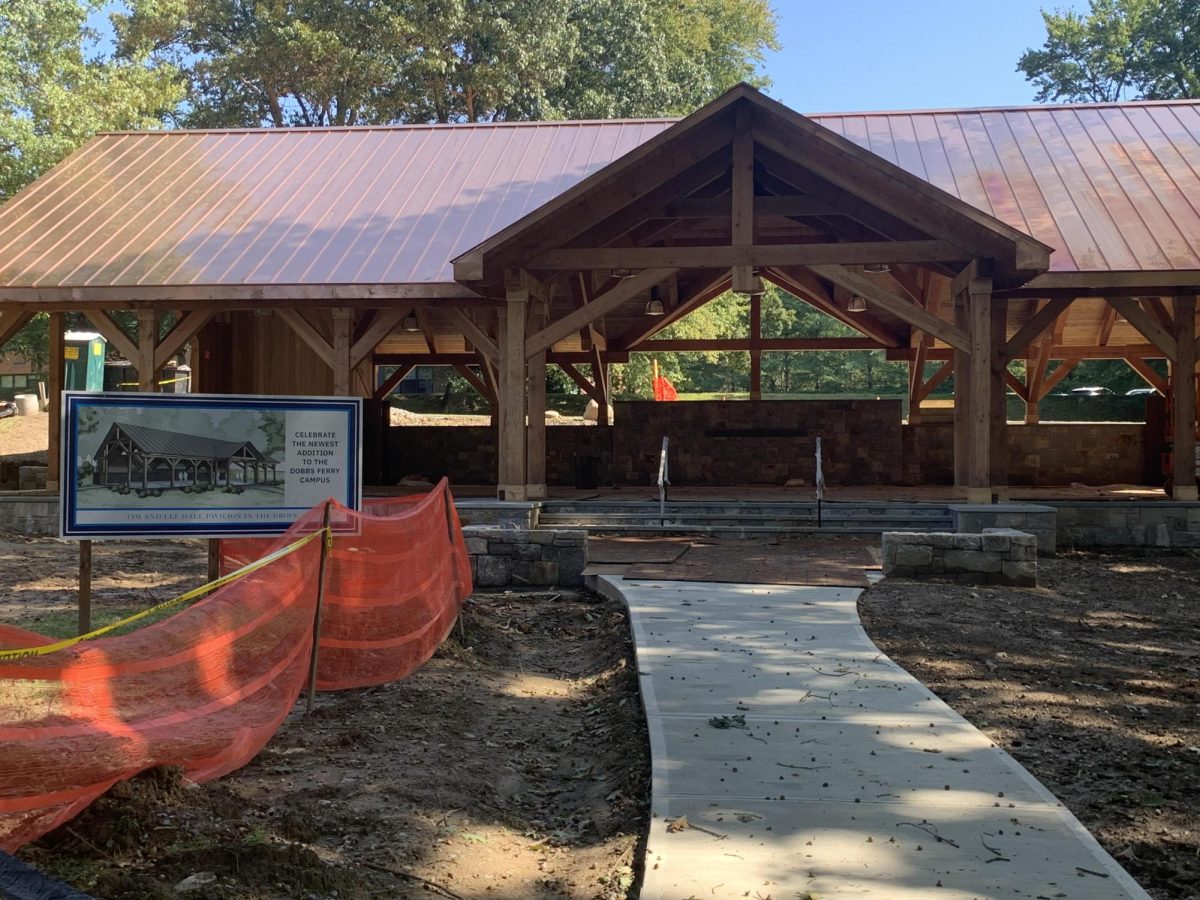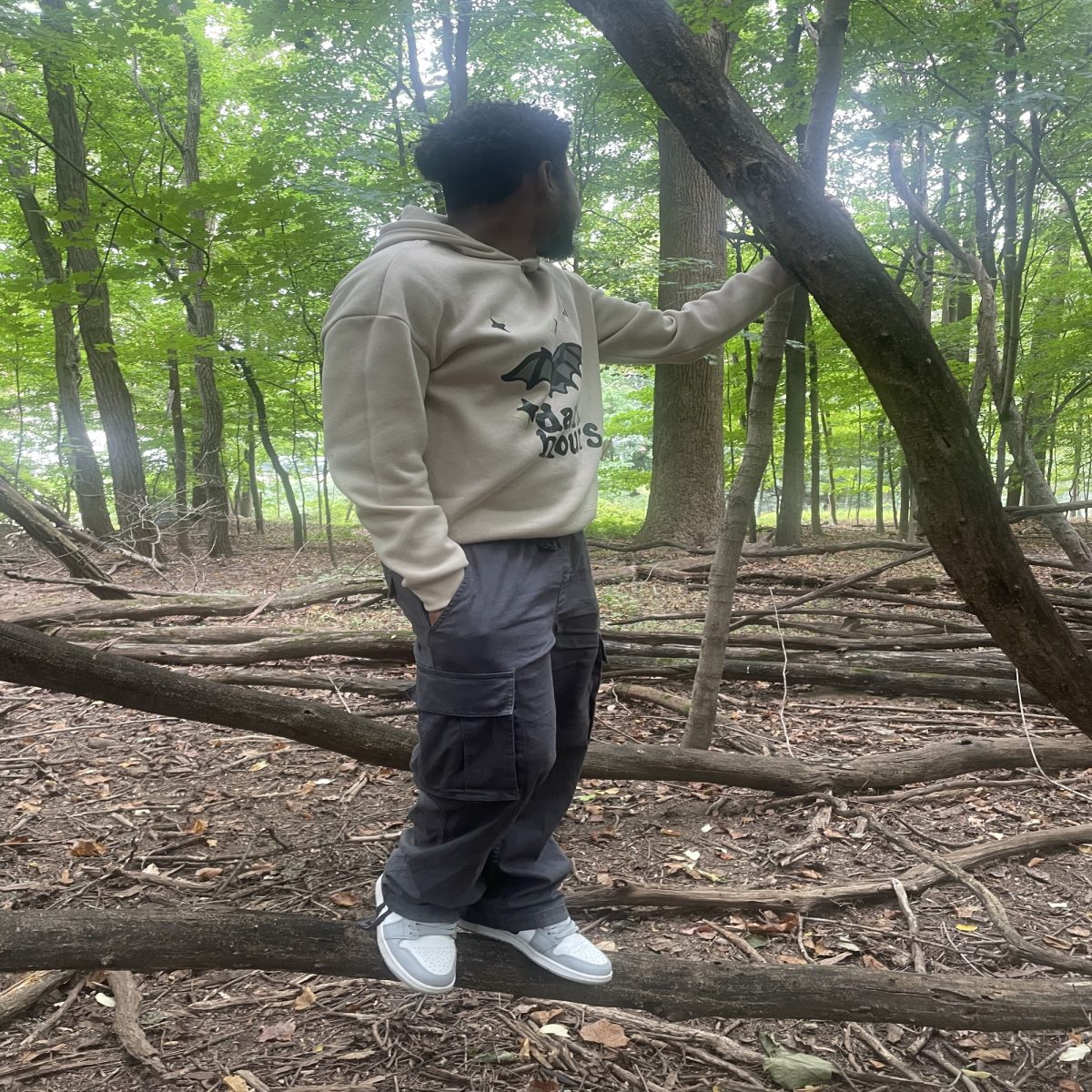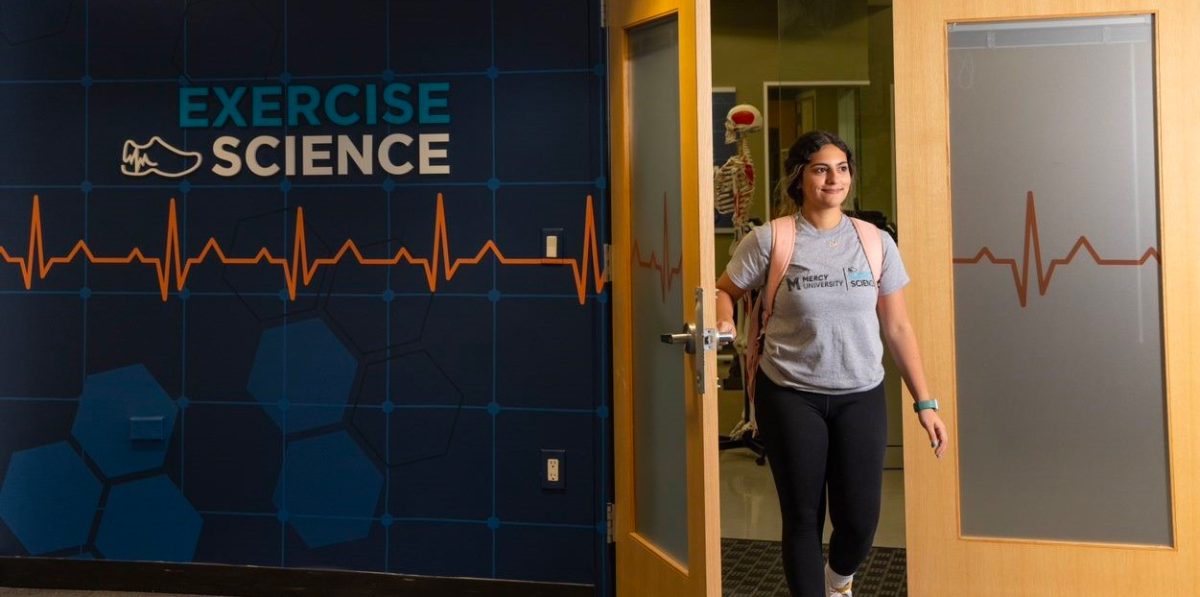The COVID-19 pandemic forced everyone inside. Now, Mercy hopes a new pavilion will bring everyone back outside and get in touch with the natural world.
The lockdowns caused by COVID had many students yearning to get fresh air and dreaming about attending outdoor classes and large social gatherings.
A temporary solution that VP of Operations and Facilities, Thomas Simmonds, proposed was to rent a large tent and put tables and chairs under it so attendees could feel both relaxed and protected from the sun’s rays.
While another put another that was “50 by 100 or 150” by one of the walkways.
It lured students back outside so they could truly experience the great outdoor scenery. However, this solution was only a short victory. The rain caused bugs to crawl out from the dirt and this situation got even muddier.
While these Mercy students enjoyed the time outside, they also wanted something “nicer” to be outside more often and just hang out.
Guarded off with red and yellow police tape tied to it and barricaded and fenced off from all sides to make sure no students haphazardly entered the final stages of the construction site, the Pavilion took nearly five months to be constructed and soon will be finished this autumn.
The Tim L. Hall Pavilion in the Grove was named and dedicated after Mercy University’s former President Hall, who served as the 12th president for the last 10 years and served throughout the pandemic.
It was a tribute to all the positive changes for the students and the campus.
The forty thousand one hundred square feet structure itself is all built. The roof was just completed with the lights with a roof copper fan design. All that is left is the planting, grating by the sidewalks and the addition of a couple of stone seats.
It could sit up to three hundred people, made with a timber open frame with wood from North Carolina, which milled all the beams. With some hand-cut natural granite stone and a copper fan roof.
“As time goes by the copper roof will age nicely,” Simmonds noted.
If your inner child or architect notices anything familiar about the structure built, Simmonds compared the assembly to a giant Lincoln Log Kit, a wooden toy used to build miniatures of buildings and forts.
The estimated time for the completion of the project is said to be just a few more weeks. It might be ready by the end of October by Halloween, with the possibility that a large event may occur.
Some events to look forward to are open mic similar to those in Liberty Hall, jam sessions, a coffee house, and a space for student clubs. A place for formal and informal, little celebratory, informal meetings and groups.
Band members playing jazz, the theater major having the stage change from the auditorium to a new wooden stage for performances, and students stopping by while lying down on the grass, watching a performance waiting between classes. A place to make memories.
Who knows even – a place to have a special moment on campus?
But the space is more than just a place for students to entertain the open space. It could also allow for informal classes.
Simmonds said, “If you get the chance to pass by it, it has some beautiful stonework.”
While the structure is beautiful, it is also sustainable.
Mercy University was concerned about how building the pavilion would fit in with all the old trees. It makes the area a grove, to make it into a Pavilion in a park. From materials to how they treat rain and snow.
Many professors from music to science are looking forward to using the structure as a way to go outside to teach their classes in a new environment and enjoy the fresh air. From music to how the local ecosystem functions.
“Study classes” was the unofficial term Simmonds used for “outdoor class.”
Over the summer Mercy College transitioned to the new and approved Mercy University and had many renovations done to the Westchester campus to better for future and past students and to enjoy their campus experience from better-expanded roads and introduced a quick meal to go along with its buffet-style cafeteria. There is this one final project that is about to finish.
The structure relates to the symbol of Mercy transitioning to a university.
Simmonds concluded, “It is just like its programs, an extension of Mercy.”









